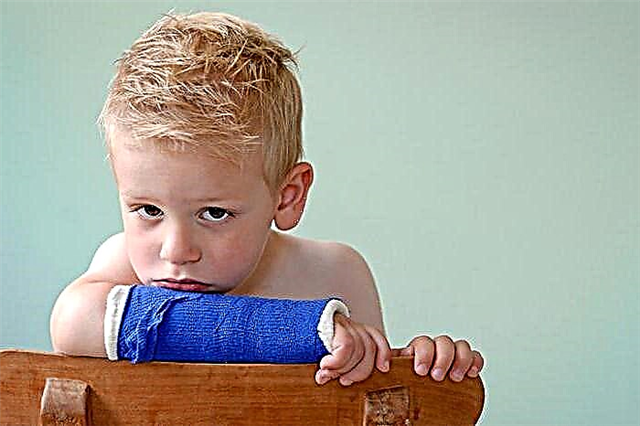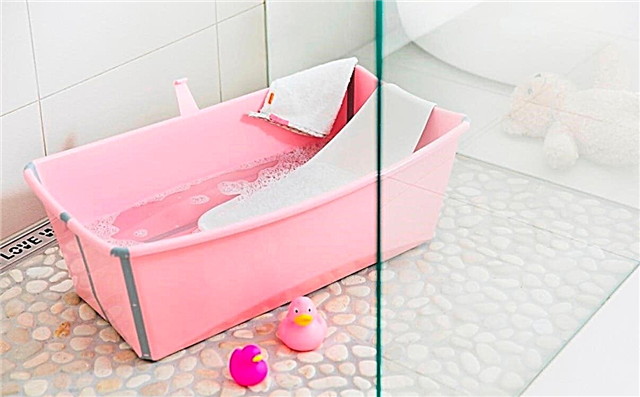Tracking the condition of a newborn is difficult. He still does not know how to speak, to show that it hurts, too, so parents should focus on other signs. For example, foamy stools in a breastfed baby are a symptom of a problem.

Mom with crying baby
Normal baby bowel movements
The interest in baby feces among those who have no children is usually considered something abnormal, strange. In fact, there is nothing wrong with that. An anamnesis can be collected from an adult: he will show that he is in pain, tell about his feelings. A child cannot do that. Therefore, parents must definitely pay attention to the well-being of the child.
Everything is important: how he breathes, how he moves his arms and legs, what color his eyes are. There are more familiar signs: nasal congestion, fever, redness of the mucous tissue in the throat. It is also necessary to keep track of what gets into the diaper. For example, if a child poops with foam, his digestive tract is definitely working somehow incorrectly.
First you need to find out what the norm should be. Children's feces in babies under one year old, fed with breast milk, can be as follows:
- Meconium. Dark green, brown, black. Very dense, viscous, difficult to wash. It happens in the first three days after birth. This is the so-called original feces, that is, the one that was formed in the intestines before birth.
- Light gray or gray-green, pasty. "Transitional" cal. Appears towards the end of the first week of life.
- The stool is yellow to brown in color. Moderately runny, may contain some white lumps, little mucus, or some greens. The smell is fermented milk, moreover, it is not sharp. Frequency - from 4 to 12 times a day (depending on age, in children on IV - less often than on HB). It can be combined with the release of gases from the intestines. This is the norm of feces for a child on HB before the introduction of complementary foods, if he is gaining weight well.
- The feces are greenish, pasty or moderately thin. The baby is not worried. A variant of the norm when introducing complementary foods.
- Other unusual colors, fragments of undigested food. When the baby is calm, it is the norm when meeting food other than milk.
Important! In all other cases, parents should pay attention - something is wrong. Need a specialist consultation. At the above rate, if the child is restless, he has increased gas production (except for the period of infant colic), and a stomach ache, you should also consult a doctor.

Mom with baby at the doctor
What is foamy feces
If the consistency of the stool changes, and the child poops with foam, this is a signal that something is wrong. For some reason, the fermentation process begins in the intestines. Mom and Dad should not ignore this symptom.
Yellow and green
If a baby has yellow foam in the stool one-time, while the baby does not show signs of discontent, then this is permissible. The small person's gastrointestinal tract is just learning to work. Therefore, the appearance of bubbles is a variant of the norm, if it lasts one day, a maximum of two. If this happens often, you need to contact your pediatrician.
If a baby poops with green foam, this can also be a variant of the norm, only if the child is not worried about anything, says pediatrician Komarovsky. If he is gaining weight well, does not suffer from pain in the tummy, and pooped foam only once or a few times, there is no problem. Then you should do a massage, apply a heating pad - everything is like with colic.

Evgeny Komarovsky
If foam in a baby in the feces appears along with pain, discomfort, a strong unpleasant odor, inflammation is visible on the skin near the anus, something goes wrong. The stool may foam due to fermentation in the gastrointestinal tract, a green color indicates indigestion.
With mucus
Mucus in the stool of an infant can appear for the following reasons:
- Allergy;
- Teething period;
- Enzyme deficiency;
- The predominance of sweet front milk in the diet;
- Infection.
This symptom is not considered a deviation from the norm if there is little mucus in the child's feces, or when the child has increased salivation due to the active growth of teeth (saliva flows into the stomach and becomes mucus). In other cases, this indicates serious problems, especially if the baby poops with foam along with mucus.
Why does foam appear
The fermentation process in the intestine can begin for various reasons. Every young parent must know them.
Infectious diseases
When an intestinal infection occurs, the bacterial balance of the gastrointestinal tract is seriously disturbed. As a result, babies have green, foamy stools, most often mixed with mucus or even blood. The kid is restless at this time, eats badly, sleeps. As a rule, this condition is accompanied by an increase in temperature. The most striking example of such an infection is rotovirus, or intestinal flu.

Intestinal influenza virus
Note! This condition is very dangerous. If you suspect an intestinal infection in an infant under one year old, you must definitely call a doctor. If at the same time the temperature rises, this is a reason to immediately call an ambulance. The same is true if feces appear mixed with streaks of blood.
Lactase deficiency
Lactase is an enzyme that helps digest milk. Its lack leads to the fact that the only food of a breastfed baby is poorly absorbed by the body. Digestion is accompanied by pain, bloating. The child suffers from intestinal colic. The baby has foamy stools with an unpleasant, pungent odor. It may also contain mucus. Suspicion of a lack of lactase is not a reason for an ambulance. You should contact your pediatrician as soon as possible.
Dysbacteriosis
The gastrointestinal tract of a newborn baby is sterile. It does not contain the necessary microflora that is responsible for the proper breakdown of food. The intestines and stomach begin to be colonized by beneficial bacteria only with the first drops of breast milk. The most crucial period of this time is the first 3 months on average.
The microflora of an infant is very vulnerable. Many children under the age of one year are diagnosed with dysbiosis - an imbalance of beneficial bacteria. For example, babies usually poop foam when their levels of Staphylococcus aureus are elevated. Normally, this bacterium is in the digestive tract, but when there is too much of it, it leads to discomfort.
Among the possible causes of dysbiosis is a complication after taking strong medications, for example, antibiotics. It is in order to avoid the development of such a problem that it is recommended to give a probiotic along with the antibiotic.

Biogaya - children's probiotic popular among Russian mothers
Early complementary foods
According to the WHO recommendations, only a 4-month-old can be given (most often artificially fed children) the first complementary foods, not earlier. It is better to wait up to six months, but even then you need to look at the child's readiness. If after the first feeding the crumbs have foamy stools, it is better to put aside mashed potatoes or porridge and consult a doctor.
The predominance of front milk in the diet
Experienced mothers at gv know that milk can be different:
- Front;
- Rear.
These names are given because milk is produced in different parts of the glands: in the front and back. Starting to get satiated, the child first of all eats what is closer, that is, fore milk. It is rich in sugars.
Normally, a baby needs both front, sweet milk, and back, more saturated with fats. For mothers with hyperlactation, it happens that the baby simply does not reach hind milk, saturating with the anterior milk. Large amounts of milk sugar also cause severe bloating, fermentation in the intestines, which leads to foamy feces.

External differences in the types of breast milk
Mom's poor nutrition
There is an opinion that the mother of the guards can eat everything. But everything must be approached reasonably, knowing when to stop. If a parent eats too much chocolate, legumes, smoked meats, fresh vegetables, then her child may then suffer from bloating, as a result - frothy feces.
Celiac disease
To put it simply, it's gluten intolerance. Foam in the stool of a baby can appear with it too. Such a problem usually arises already in the second half of the child's life, when cereals are introduced into his diet.
Diagnostic methods
You can determine that everything is definitely not in order with the baby by the following points:
- The feces are liquid or watery, foamy. At the same time, diarrhea smells harsh and bad. The color ranges from yellow to green.
- There may be impurities: mucus or blood.
- The child is not feeling well. He is worried about cramps in the tummy, he bends his legs to his stomach, pushes, farts, cries. The clinical picture may be similar to that of colic.
- The situation repeats itself for more than two days in a row.
- The kid is not gaining weight well, looks unhealthy.
- The skin around the anus may be inflamed.
If the child's feces begin to bubble, for sure, there is already some problem. Depending on the severity of the child's condition, either you need to visit the local pediatrician, or call an ambulance. In case of high body temperature, vomiting, blood in the stool, you should immediately call an ambulance.

Mom calls an ambulance
What parents need to do
It is mom and dad who are primarily responsible for the life and health of their baby. Therefore, they must know how to help a child when he is bad. You can do it like this:
- If a newborn poops foam, and this is accompanied by other dangerous syndromes, you should immediately seek emergency medical help.
- Mom needs to reconsider her diet. Maybe she ate too many bloating foods. In this case, adjusting the power supply will solve the problem.
- It is necessary to assess whether the child is ready to eat "adult" food. Many parents are impatient to transfer their children to porridge and mashed potatoes. You should not rush into this. Better to let the baby's intestines mature for this.
- If the mother has too much milk, the breast should be changed less frequently during feedings. Usually one is given per meal. In case of hyperlactation, one breast is given for two feedings. So the baby eats both front and rear milk.
- When treating with antibiotics, it is imperative to give probiotics for a small abdomen with them.
- Lactase deficiency is a problem that a doctor should treat. Self-medication is unacceptable.
Foamy poop in a baby is a symptom that parents cannot ignore. Maybe the solution will be to adjust the mother's diet, maybe the problem is more serious and requires medication. In any case, if any controversial issues arise, you should consult a doctor.



